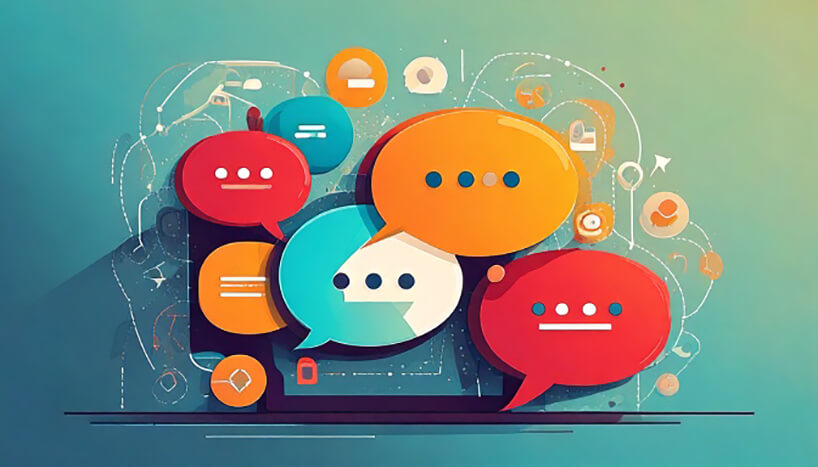A review of chatbots in statistics for 2023

The popularity of chatbots exploded in 2023. Discover statistics on their usage and benefits here and why conversational marketing is the future.
The rise of chatbots in the modern economy is inexorable. Gains in artificial intelligence mean that their business applications are proliferating like never before. Future historians will likely look back at 2023 as the year the humble chatbot came of age.
This post explores some usage- and benefits-related statistics of chatbots in 2023 and how they are transforming the world, one chat at a time.
Sixty-four per cent of businesses now use chatbots for customer support
Nearly two-thirds of companies now use chatbots for customer support. Brands are leveraging their ability to triage customers into those requiring escalation to human reps and those not.
For example, customers can now enter a brand’s site and engage with a conversational UI. The bot answers their question immediately or forwards them to a rep who can see the transcript of the conversation. The result is better service that can operate twenty-four-seven.
Chatbots save businesses 2.5 billion hours per year
Conversational chatbots are also saving businesses an estimated 2.5 billion hours per year. That translates to a massive labour saving equivalent to around three and a half days per year for every working person in the UK.
The savings result from the ability to avoid unnecessary conversations with customers. Firms can redirect their agents to concentrate on only the highest-value chats or those requiring the most complex solutions.
Forty-eight per cent of customers don’t care whether they are talking to a human agent
Data reveal that attitudes toward chatbots are also changing. Research suggests that nearly half of customers now do not care if they are talking to an AI, a human, or a combination of the two. This figure will likely increase further as AI becomes more enmeshed in the economy and customer interactions. Customers will eventually “get used” to talking to AIs, especially if they can provide helpful responses.

Chatbots deliver 80% customer satisfaction
Chatbots provide a satisfactory experience for four out of five customers, according to research by Kindly. It found that consumers love AI’s precise responses to their questions.
However, the introduction of large language models (LLMs) may change this dynamic further. These systems can provide “looser” or less well-defined answers that take context and situation into account. Because of this, consumer satisfaction ratings are likely to increase significantly in the coming years.
Forty-two per cent of consumers now use chatbots while buying products online
Forty-two per cent of consumers now use chatbots when making online purchases, according to Drift. This statistic reflects an increasing proliferation of these systems on ecommerce websites and elsewhere. The tools are considerably more commonplace than they were even five years ago.
Again, the explosion in usage during 2023 arises from chatbots’ growing capabilities. AI infusion enables these tools to provide contextually relevant and nuanced answers to customers’ natural language queries.
Businesses and retail stores estimate chatbots saved them $8 billion in 2023
Providing chat support services can be costly. However, estimates suggest that their implementation saved businesses over $8 billion in 2023.
The increase in labour-saving is the main reason for the reduced cost of doing business. The price per query is significantly lower for a chatbot than a human operative.
Four out of five businesses are looking for ways to include chatbots in their services
An incredible 80% of businesses in 2023 say they want to include chatbots in their operations in some capacity. The majority of firms will use them for customer service and support. However, many are also now using them for internal IT help desks, improving the colleague experience.
Chatbots resolve 90% of queries instantly if users explain the query properly
MIT researchers believe chatbots can resolve nine out of ten questions instantly if users’ queries are accurate. That’s because chatbots have access to near-infinite computing resources to respond.
Unfortunately, human prompts can confuse chatbots in 10% of situations, leading to a slower response. However, the same is true of human reps. Clarification is always required.
Fifty-five per cent of businesses generate more sales using chatbots
A Drift study found that companies make 55 per cent more sales when implementing chatbots. Commentators believe this occurs because these systems can overcome users’ pain points and objections and direct them towards making a purchase. The ability of chatbots to provide clarification and build trust may also be a contributing factor.
























